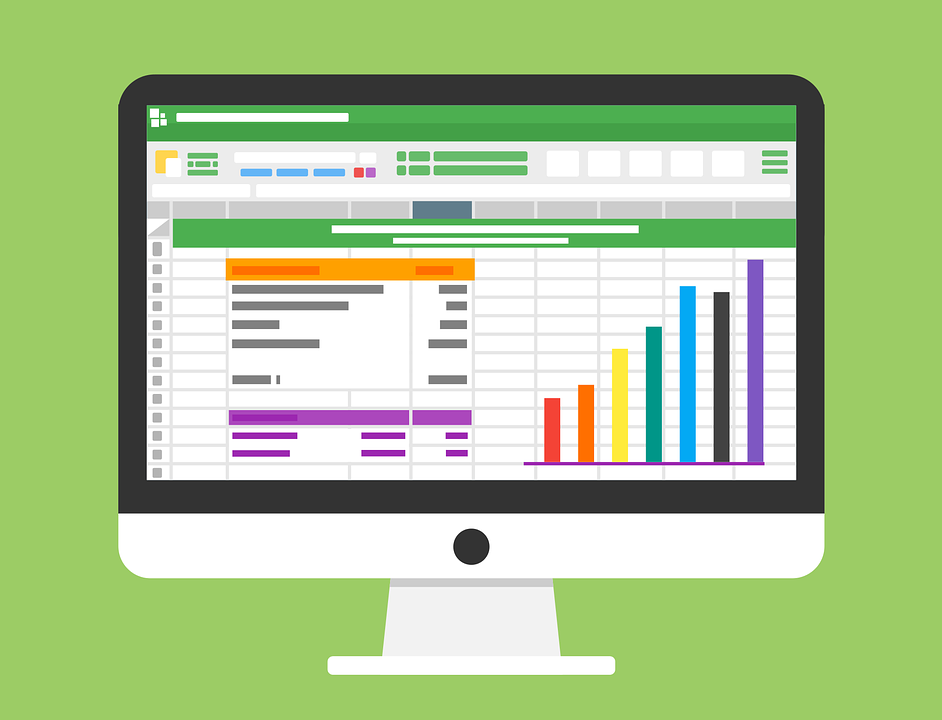Email marketing and marketing automation tools have become an integral part of businesses’ digital marketing strategy, allowing them to engage with their audience and convert leads into loyal customers. Active Campaign and Get Response are two popular email marketing and marketing automation platforms that offer a plethora of features to help businesses grow and succeed. But which one is the best fit for your business needs? In this detailed comparison, we will take a closer look at the features, pricing, and overall user experience of Active Campaign and Get Response to help you make an informed decision. So, let’s dive in and explore the key differences and similarities between these two powerful platforms.
What Is Active Campaign And Get Response?
ActiveCampaign and GetResponse are both cloud-based email marketing and marketing automation platforms that allow businesses of all sizes to create and manage their email campaigns and automate their marketing tasks.
ActiveCampaign is a customer experience automation platform that provides email marketing, marketing automation, sales automation, and CRM capabilities. It is designed to help businesses automate their marketing and sales processes to convert more leads, retain more customers, and grow their business.
GetResponse is an all-in-one marketing platform that provides email marketing, landing pages, marketing automation, webinar hosting, and CRM capabilities. It is designed to help businesses streamline their marketing efforts and engage with their audience more effectively.
Both platforms offer similar features such as email marketing, marketing automation, and CRM integration, but there are some key differences between them.
Pricing and Plans:
ActiveCampaign offers four pricing plans: Lite, Plus, Professional, and Enterprise. The pricing varies depending on the number of contacts and the features included in each plan. The Lite plan starts at $9 per month and includes email marketing, marketing automation, and CRM integration. The Enterprise plan offers advanced features such as custom reporting and machine learning and starts at $229 per month.
GetResponse offers four pricing plans as well: Basic, Plus, Professional, and Max. The pricing varies based on the number of contacts and the features included in each plan. The Basic plan starts at $15 per month and includes email marketing, landing pages, and basic marketing automation. The Max plan offers advanced features such as webinars and starts at $165 per month.
| Lite/Basic | Starts at $9/month | Starts at $15/month |
| Plus | Starts at $49/month | Starts at $49/month |
| Professional | Starts at $129/month | Starts at $99/month |
| Enterprise/Max | Starts at $229/month | Starts at $165/month |
Email Marketing Feature
Email marketing is a critical component of any digital marketing strategy, enabling businesses to reach out to their target audience and drive engagement. Both ActiveCampaign and GetResponse offer a range of email marketing features to help businesses create and send compelling email campaigns that resonate with their audience. Let’s take a closer look at some of the essential email marketing features offered by both platforms.
Email Design:
Both ActiveCampaign and GetResponse offer an intuitive drag-and-drop email editor that allows businesses to create professional-looking email campaigns without any coding skills. With a variety of templates, color schemes, and font options to choose from, businesses can create eye-catching emails that align with their brand image and messaging.
Contact Management:
Effective contact management is crucial for successful email marketing campaigns. Both platforms offer contact management tools that allow businesses to segment their audience, create custom fields, and import and export contact lists. ActiveCampaign takes it one step further by providing a visual automation map that displays how contacts move through different stages of the marketing funnel, making it easier to manage and track contacts’ behavior.
Autoresponders:
Autoresponders are pre-written emails that are triggered by specific actions, such as a new subscriber joining the email list or a user completing a purchase. Both ActiveCampaign and GetResponse offer autoresponder functionality, enabling businesses to create automated email sequences that help drive engagement and conversions.
A/B Testing:
A/B testing is a powerful tool that allows businesses to test different elements of their email campaigns, such as subject lines, images, and calls-to-action, to see which performs better. Both ActiveCampaign and GetResponse offer A/B testing capabilities, enabling businesses to optimize their email campaigns for maximum effectiveness.
Campaign Reports:
Both platforms provide detailed campaign reports that allow businesses to track key metrics, such as open rates, click-through rates, and conversion rates. ActiveCampaign offers more advanced reporting features, such as revenue tracking and website event tracking, which can provide businesses with deeper insights into the effectiveness of their email campaigns.
Overall, both ActiveCampaign and GetResponse offer robust email marketing features that enable businesses to create, manage, and optimize their email campaigns with ease. However, ActiveCampaign’s visual automation map and advanced reporting features make it a more powerful tool for businesses that require more granular insights into their email campaigns’ performance.
Marketing Automation Features
Marketing automation features are tools and functionalities within email marketing and marketing automation platforms that allow businesses to automate their marketing campaigns and workflows, making their processes more efficient and effective. These features can help businesses save time and resources while still delivering personalized and relevant messages to their audience.
Here are some of the key marketing automation features that both ActiveCampaign and GetResponse offer:
Workflow Builder
Both ActiveCampaign and GetResponse offer a visual drag-and-drop workflow builder that allows businesses to create and automate their marketing campaigns. This feature enables businesses to create custom workflows and trigger specific actions based on subscriber behavior or other triggers, such as email opens or clicks.
Tagging and Segmentation
With these features, businesses can organize and segment their audience based on their interests, behavior, or other criteria. This enables businesses to deliver personalized messages to their subscribers and improve engagement rates.
Lead Scoring
This feature allows businesses to assign scores to their leads based on their behavior and engagement levels. It helps businesses identify their most engaged and valuable leads and prioritize them for further engagement.
CRM Integration
Both ActiveCampaign and GetResponse integrate with popular CRMs, such as Salesforce and HubSpot, to provide a complete view of their customer journey and interactions. This feature enables businesses to better understand their customers’ needs and preferences and deliver personalized messages at each stage of the customer journey.
E-commerce Integration
These features allow businesses to integrate their e-commerce platforms, such as Shopify or WooCommerce, with their email marketing and marketing automation platforms. This enables businesses to send targeted messages to their customers based on their purchase history and behavior.
In summary, marketing automation features enable businesses to streamline their marketing campaigns and workflows, save time and resources, and deliver personalized messages to their audience. By utilizing these features, businesses can improve their overall marketing strategy and grow their customer base.
Landing Pages
Landing pages and forms are essential elements of any digital marketing strategy, as they play a crucial role in converting visitors into leads or customers. ActiveCampaign and GetResponse offer robust landing page and form builders that allow users to create professional-looking landing pages and forms without any coding knowledge.
Landing Pages:
ActiveCampaign and GetResponse’s landing page builders allow users to choose from a wide range of pre-designed templates that can be customized to match their brand’s look and feel. Both platforms offer a drag-and-drop editor that makes it easy to add text, images, videos, and other design elements to the landing page. Users can also add custom HTML and CSS if they want to further customize the landing page’s design.
One significant difference between the two platforms is that ActiveCampaign’s landing pages are responsive, meaning they can automatically adjust to fit any screen size, while GetResponse’s landing pages require users to create a separate mobile version of the page.
Forms:
ActiveCampaign and GetResponse’s form builders allow users to create customized forms to collect lead information. Both platforms offer a variety of form templates that can be easily customized with drag-and-drop editors.
ActiveCampaign’s form builder is more advanced, offering more customization options such as conditional logic, where users can show or hide fields based on a visitor’s previous selections. It also allows users to embed forms on their website or use them as pop-ups, slide-ins, or floating bars.
GetResponse’s form builder, on the other hand, offers fewer customization options but is still intuitive and easy to use. It also provides users with the ability to create survey forms and quizzes.
Both platforms offer integration with third-party apps and services such as WordPress, Shopify, and Zapier, allowing users to easily connect their forms and landing pages to other tools in their marketing stack.
Overall, ActiveCampaign’s landing page and form builder is more robust and offers more customization options than GetResponse’s. However, both platforms provide users with an easy-to-use interface that allows them to create professional-looking landing pages and forms that can help them convert visitors into leads or customers.
Integrations
ntegrations refer to the ability of software platforms to connect with other third-party applications or services to extend their functionality or streamline workflows. ActiveCampaign and GetResponse both offer a wide range of integrations to help businesses optimize their digital marketing efforts and automate processes.
ActiveCampaign offers more than 350 integrations with popular tools such as Shopify, Salesforce, WordPress, and Zapier, among others. The platform also provides an open API, allowing businesses to develop their integrations if needed. ActiveCampaign’s integration capabilities cover various areas, including eCommerce, analytics, social media, and productivity tools.
Similarly, GetResponse also offers a vast array of integrations with more than 150 third-party applications such as Google Analytics, PayPal, WooCommerce, and Salesforce, to name a few. The platform also provides an open API, enabling businesses to develop custom integrations or use third-party integrations available on the GetResponse Marketplace.
Both ActiveCampaign and GetResponse offer integrations with popular social media platforms, including Facebook, Twitter, and LinkedIn, allowing businesses to synchronize their social media marketing efforts with their email marketing and automation campaigns.
It’s worth noting that while both platforms offer a wide range of integrations, ActiveCampaign’s integration capabilities are more extensive, offering more options for businesses to connect with the tools they need to enhance their marketing efforts.
Customer Support
Customer support is a crucial aspect to consider when choosing an email marketing and marketing automation platform. ActiveCampaign and GetResponse both offer various channels to assist their users with any queries or issues they may encounter.
ActiveCampaign provides customer support through email, live chat, and phone support. The platform has an extensive knowledge base that includes articles, videos, and user guides. ActiveCampaign’s customer support team is available 24/7, and users can expect a response time of fewer than 30 minutes through live chat. Moreover, ActiveCampaign offers personalized onboarding assistance to help new users get started and maximize the platform’s features.
GetResponse offers customer support through email and live chat. The platform also has a comprehensive knowledge base that includes user guides, video tutorials, and FAQs. GetResponse’s customer support team is available 24/7, and users can expect a response time of fewer than 15 minutes through live chat. Furthermore, GetResponse provides a dedicated account manager for its Enterprise plan users to help them with any technical or strategic queries they may have.
Both platforms offer a range of support resources to assist users, but GetResponse’s faster response times and dedicated account managers for Enterprise plan users give it a slight edge over ActiveCampaign. However, ActiveCampaign’s 24/7 availability and personalized onboarding assistance can make it a better fit for businesses that require more hands-on support. Ultimately, it depends on the level of support a user requires and their preferred communication channels.
Pros and Cons
Here is the pros and cons of ActiveCampaign and GetResponse are:
ActiveCampaign Pros:
- Robust Marketing Automation: ActiveCampaign’s marketing automation features are highly advanced and allow businesses to create complex automation workflows with ease. The platform offers drag-and-drop functionality to create automation workflows, and you can trigger actions based on subscriber behavior, tags, and other conditions.
- Powerful Segmentation: With ActiveCampaign, you can segment your contacts based on behavior, tags, location, and more. This feature allows you to personalize your email marketing campaigns and target your audience more effectively.
- Advanced CRM Features: ActiveCampaign has a built-in CRM that allows you to manage your leads and customers, create deals, and track your sales pipeline. This feature enables businesses to nurture leads and close deals in a more efficient manner.
- Integrations: ActiveCampaign has more than 850 integrations with third-party applications, including Zapier, Salesforce, and Shopify, making it easy to connect with your existing tools and services.
ActiveCampaign Cons:
- Steep Learning Curve: ActiveCampaign’s advanced features and complex automation workflows can be overwhelming for beginners. It may take some time to learn how to use the platform effectively.
- Limited Landing Page Builder: ActiveCampaign’s landing page builder is relatively limited compared to other platforms, and the templates are not very customizable.
- No Free Plan: ActiveCampaign does not offer a free plan, which may be a drawback for small businesses or startups that are just getting started with email marketing.
GetResponse Pros:
- User-Friendly Interface: GetResponse has a simple and user-friendly interface that is easy to navigate. The platform is intuitive and makes it easy to create email campaigns and automation workflows.
- Advanced Email Marketing Features: GetResponse offers a wide range of email marketing features, including A/B testing, list segmentation, and email design templates. These features help businesses create engaging email campaigns and increase their open and click-through rates.
- Landing Page Builder: GetResponse has a powerful landing page builder that allows businesses to create high-converting landing pages quickly. The platform offers a wide range of templates and customization options to create landing pages that match your brand.
- Affordable Pricing: GetResponse offers affordable pricing plans, including a free trial and a free plan for up to 1,000 subscribers. This feature makes it an attractive option for small businesses and startups.
GetResponse Cons:
- Limited Marketing Automation: While GetResponse offers marketing automation features, they are not as advanced as ActiveCampaign’s. The platform lacks some of the more complex automation workflows and triggers that ActiveCampaign provides.
- Limited Integrations: GetResponse has fewer integrations compared to ActiveCampaign, which may be a drawback for businesses that rely on third-party applications and services.
- Limited CRM Features: GetResponse’s CRM is relatively basic compared to ActiveCampaign. The platform lacks advanced features like deal tracking and pipeline management.
Comparison Of Active Campaign And Get Response
| Feature | ActiveCampaign | GetResponse |
| Pricing | Starts at $15/month | Starts at $15/month |
| Email Marketing Features | Yes | Yes |
| Marketing Automation Features | Yes | Yes |
| Landing Pages and Forms | Yes | Yes |
| Integrations | 300+ | 200+ |
| Customer Support | 24/7 live chat, email, and phone support | 24/7 email and chat support |
| Email Design | Yes | Yes |
| Contact Management | Yes | Yes |
| Autoresponders | Yes | Yes |
| A/B Testing | Yes | Yes |
| Campaign Reports | Yes | Yes |
| Workflow Builder | Yes | Yes |
| Tagging and Segmentation | Yes | Yes |
| Lead Scoring | Yes | Yes |
| CRM Integration | Yes | Yes |
Conclusion
After a thorough comparison of ActiveCampaign and GetResponse, it’s clear that both platforms have their strengths and weaknesses. Ultimately, the choice between the two will depend on your specific business needs and budget.
If you’re primarily looking for email marketing features, GetResponse might be the better option for you. It offers an intuitive email builder, a wide range of templates, and powerful list management features. GetResponse also has more affordable pricing plans for businesses on a budget.
On the other hand, if you’re looking for more advanced marketing automation capabilities, ActiveCampaign may be the way to go. Its automation workflows are highly customizable and can be used for everything from lead nurturing to cart abandonment. ActiveCampaign also offers CRM integration, which can be a game-changer for businesses looking to streamline their sales and marketing efforts.
Both platforms offer landing page builders, but ActiveCampaign’s is more limited in terms of design options. However, if you’re looking for a platform with a wide range of integrations, both ActiveCampaign and GetResponse have you covered. They integrate with popular apps and tools like Shopify, WordPress, and Salesforce.
Finally, it’s worth noting that both Active Campaign and Get Response offer excellent customer support. You can access help articles, video tutorials, and live chat support to get the assistance you need.
Whether you choose Active Campaign or Get Response, you’re getting a powerful marketing tool that can help take your business to the next level. Consider your specific business needs and budget when making your decision, and don’t be afraid to take advantage of the free trials offered by both platforms to get a feel for their features and functionality.





 Get Sala Now
Get Sala Now